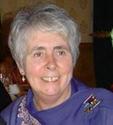
It is thought that the whirling dance began with Rumi, a 13th cy. Sufi mystic and poet whose poetry is still popular today. One story is that Rumi was walking in a marketplace when he heard in his heart the words 'La Ilaha Ilallah', there is no God but God in time to the rhythmic hammering of the gold-beaters. Consumed by the love of God this chant filled his being and he began to turn round and round in ecstasy. Over time this movement became formalised but its intention is to express love of God and to lead to greater love and union with God. It is an ecstatic experience which emphasises the importance of religious experience, something that institutional religion often considers suspect.
Islam is not the only religion to have its ecstatic dance. At a particular time in its history, when European Judaism was in disarray, Baal Shem Tov established a movement which emphasised devotion and the love of God, available to the most simple of souls . This love of God was expressed in joyful dancing and gratitude.
While other religions such as Hinduism and Buddhism have their own form of dance, religions have also been suspect of it, seeing it as being related to pagan rituals and fearing it would lead to immorality.
But dance is a way of opening to the Spirit, to the energy of the world, to the dance of the cosmos. It is a way of moving from the head to the body, listening to our own inner rhythm, beginning to move to our own drumbeat. It helps us focus on and listen to the present moment. It is a liberating experience to move, to feel the energy within which is the energy of the world. It is joyful, freeing, and wholesome. Gabriel Roth sums it up so well when she says "We dance to fall in love with the spirit in all things" . Her question to us is " Do you have the discipline to be a free spirit? Can you be free of all that binds and bends us into a shape of consciousness that has nothing to do with who we are from moment to moment, from breath to breath?
Well can you? The Ignatian Spirituality Centre shows a way.


 RSS Feed
RSS Feed
